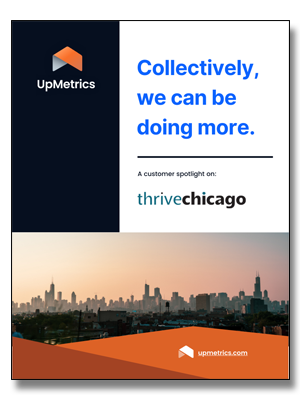Moving Beyond 'Vanity Metrics' - Key Questions to Ask Yourself to Bring Depth to Impact Reporting
The history of philanthropy and change work should fill us all with great inspiration and great humility. We know there is no silver bullet out there to address all the injustices of the world, and no organization can do it alone. This is why building a culture of shared learning -- in which we can be vulnerable to talk about our work honestly and with nuance -- is so important. Unfortunately, too often organizations give into the impulse to publish "vanity metrics" that sound impressive at a glance rather than display their work in ways that can lead to more enduring conversations, ideas, and actions.
Vanity metrics are numbers and anecdotes that are presented primarily to make an organization look significant, as opposed to metrics that are defined and leveraged primarily for generating insights and strengthening an organization's impact going forward.
There is an adage in youth development: “Nothing about youth, without youth.” With this ethos in mind, you can use the following prompts to help you bring more opportunities for shared learning into your impact reporting:
- Ask yourself: Are we measuring both program reach and program depth? (Calling out a big number of people, households, or communities reached without talking about the depth to which they were served misses an opportunity to more accurately describe your impact.)
- When highlighting an individual success story, are we situating that individual within their context and community? (Capturing high-quality content like photos of program activities or video testimonials with beneficiaries can become powerful qualitative data if you provide sufficient context to help viewers make sense of the information and spark new questions.)
- How can we both celebrate the successes of our work while also speaking to the systemic injustices and challenges that make our work necessary? (One hallmark of moving beyond vanity metrics is to acknowledge the complexity of reality and the patience required for creating change over time because impact is not linear.)
- When referencing recognitions we’ve received, are we talking about the specific work we've done that’s worthy of recognition? (It can also be highly instructive to survey your beneficiaries or partners for a Net Promoter Score and ask how their lives have changed because of your work, rather than predominantly looking to industry awards as evidence of impact.)
- Are we collecting data in a way that it can only be manually cobbled together for use in our annual report, or are we collecting data in a systematic and sustainable way we can use throughout the entire year? (Many organizations begin with baselining their performance using data that looks backwards, but the next step to becoming more data-driven is to focus on data that can be used for learning and improvement in the future.)
This is not meant to be a list of "gotcha" questions and it's OK if your current impact measurement efforts are not yet incorporating all of the above considerations. Indeed, the good news is that vanity metrics often represent a first step towards the Key Impact Indicators and stories that are actually at the heart of your impact.
One of the most important elements of change work is telling your story in a way that is authentic and actionable. I hope the above prompts inspire you and your organization to consider additional ways to intentionally gather and share evidence of your impact so that others can learn from your experiences and help drive further progress towards our shared goals for a thriving world.

July 19, 2023
